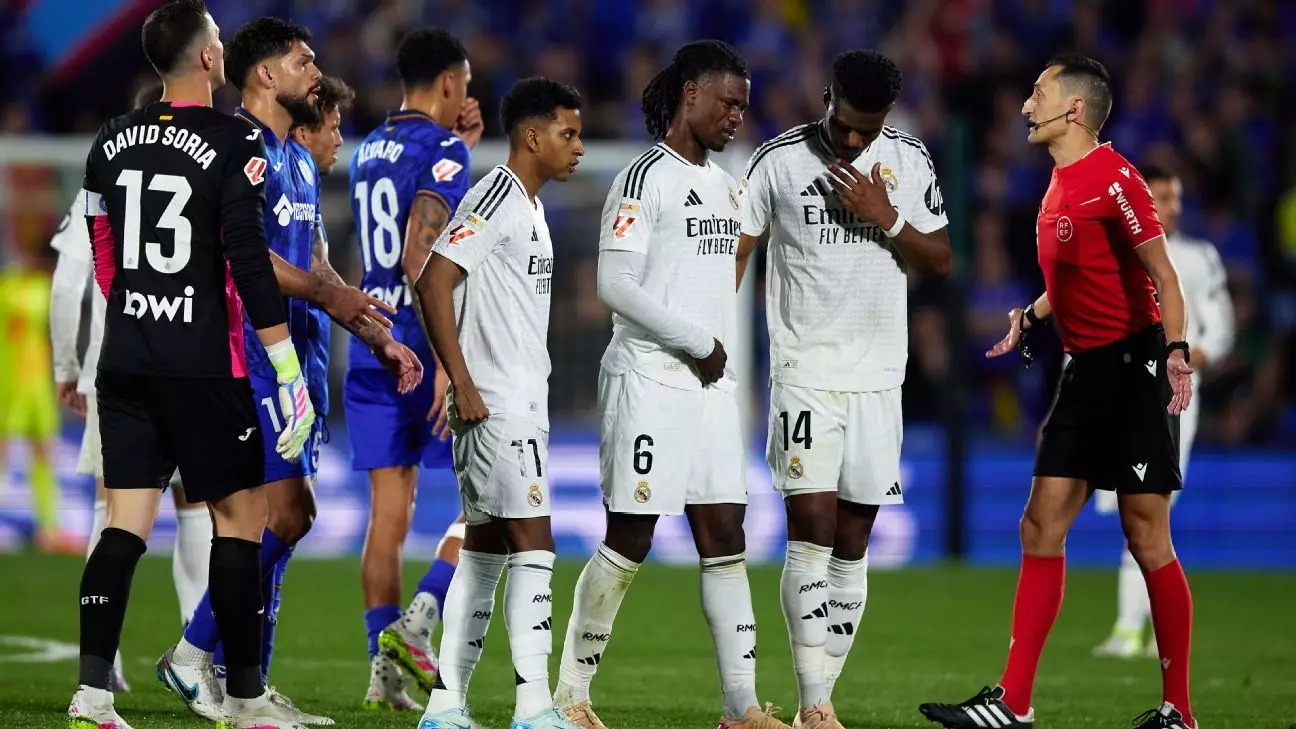As Real Madrid gears up for a high-stakes Copa del Rey final against their arch-rivals Barcelona, the atmosphere is anything but celebratory. Manager Carlo Ancelotti’s announcement regarding the physical state of key players David Alaba and Eduardo Camavinga raises concerns not just about this match but also about the depth of Madrid’s squad under pressure. Injuries sustained during the recent LaLiga match against Getafe have left both players’ availability for the final in jeopardy, casting a shadow over Real Madrid while they attempt to put together a winning strategy.
The reality of the situation is stark; Alaba felt discomfort early on against Getafe, and his substitution was followed by the early exit of Camavinga, leaving Madrid to finish the match down a man. Ancelotti’s candid acknowledgment—that recovery will be “difficult”—reflects a not-so-rosy outlook for fans cringing at the thought of a squad diminished by injuries in such a crucial clash. With Ferland Mendy still recovering, the absence of both Alaba and Camavinga creates a glaring gap in the squad’s left flank, compelling the reliance on Fran García. The pressures of such injuries beg the question: how resilient can Real Madrid be when the stakes are this high?
Focus on Form and Momentum
Despite the injury concerns, it’s crucial to recognize that Real Madrid does hold some advantages. Their recent win against Getafe ensured they maintained a competitive edge in the LaLiga title race, still lingering only four points behind Barcelona. Ancelotti’s remarks encapsulate the tension surrounding cup final dynamics; despite external narratives that might position Barcelona as favorites, cup finals often defy the odds. Indeed, history has shown that the unpredictability of knockout games can flip the narrative. Madrid must leverage this potential unpredictability to reclaim their dominance and channel the competitive spirit that comes with being part of such an iconic rivalry.
Another bright spot in an otherwise challenging week has been the emergence of Arda Güler. The teenager showcased his talent with a stunning goal, providing a glimmer of hope amid adversity. Ancelotti’s strategic outlook places Güler’s future in a midfield role, revealing a tactical depth that the manager believes can be essential for the club’s evolution. The discussion around Güler’s positioning reflects a broader understanding of what Madrid needs moving forward: versatility in playmakers who can handle the pressure and orchestrate the game from the center.
Reacting to Hostile Environments
Adding another layer to this already complex narrative is the conduct of the home crowd at the Coliseum. The targeting of Madrid’s Dani Ceballos by toxic chants illustrates the sometimes brutal reality of football culture, especially in high-stakes matchups. The referee’s need to pause the match hints at a deeper issue regarding fan interactions and the atmosphere that can influence player performance. Such hostility can rattle even the most experienced of players, and it remains to be seen how Madrid will react in the face of another hostile crowd when they face Barcelona.
In light of injuries, emerging talents, and challenging atmospheres, the coming days will demand resilience and adaptability from Real Madrid. Ancelotti’s careful navigation through these turbulent waters could be the difference between triumph and defeat in the coveted Copa del Rey final.

